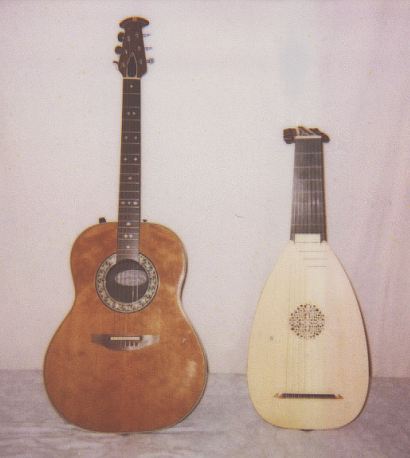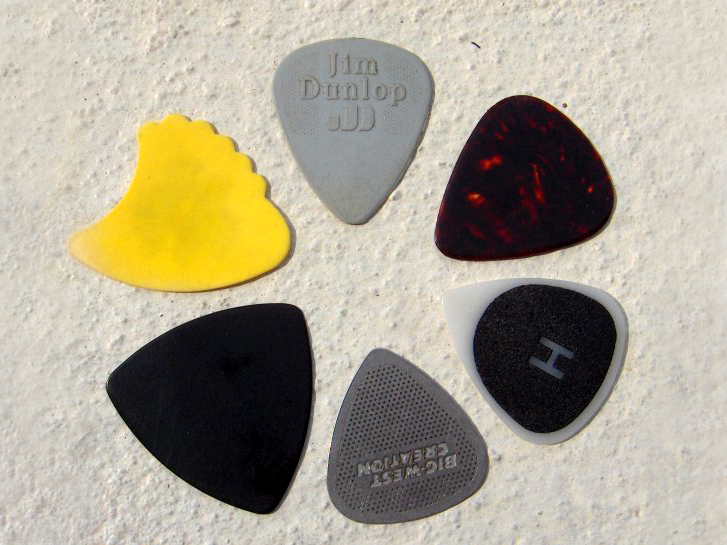|
Guitarra Latina
The guitarra latina is a plucked string instrument of the Medieval period in Europe. It has single string courses, and it is normally played with a pick. This gittern or citole with curved sides is illustrated in the medieval musical text the Cantigas de Santa Maria, alongside another gittern, the guitarra morisca. References *The New Grove Dictionary of Music and Musicians ''The New Grove Dictionary of Music and Musicians'' is an encyclopedic dictionary of music and musicians. Along with the German-language ''Die Musik in Geschichte und Gegenwart'', it is one of the largest reference works on the history and the .... Macmillan Publishers, 1980. . External links {{Lute Guitars Medieval musical instruments ... [...More Info...] [...Related Items...] OR: [Wikipedia] [Google] [Baidu] |
Guitar Latina Morisca
The guitar is a fretted musical instrument that typically has six strings. It is usually held flat against the player's body and played by strumming or plucking the strings with the dominant hand, while simultaneously pressing selected strings against frets with the fingers of the opposite hand. A plectrum or individual finger picks may also be used to strike the strings. The sound of the guitar is projected either acoustically, by means of a resonant chamber on the instrument, or amplified by an electronic pickup and an amplifier. The guitar is classified as a chordophone – meaning the sound is produced by a vibrating string stretched between two fixed points. Historically, a guitar was constructed from wood with its strings made of catgut. Steel guitar strings were introduced near the end of the nineteenth century in the United States; nylon strings came in the 1940s. The guitar's ancestors include the gittern, the vihuela, the four-course Renaissance guitar, and the fi ... [...More Info...] [...Related Items...] OR: [Wikipedia] [Google] [Baidu] |
Plucked String Instrument
Plucked string instruments are a subcategory of string instruments that are played by plucking the strings. Plucking is a way of pulling and releasing the string in such a way as to give it an impulse that causes the string to vibrate. Plucking can be done with either a finger or a plectrum. Most plucked string instruments belong to the lute family (such as guitar, bass guitar, mandolin, banjo, balalaika, sitar, pipa, etc.), which generally consist of a resonating body, and a neck; the strings run along the neck and can be stopped at different pitches. The zither family (including the Qanún/kanun, autoharp, kantele, gusli, kannel, kankles, kokles, koto, guqin, gu zheng and many others) does not have a neck, and the strings are stretched across the soundboard. In the harp family (including the lyre), the strings are perpendicular to the soundboard and do not run across it. The harpsichord does not fit any of these categories but is also a plucked string instrument, as ... [...More Info...] [...Related Items...] OR: [Wikipedia] [Google] [Baidu] |
Course (music)
A course, on a stringed musical instrument, is either one string or two or more adjacent strings that are closely spaced relative to the other strings, and typically played as a single string. The strings in each multiple-string course are typically tuned in unison or an octave. Normally, the term ''course'' is used to refer to a single string only on an instrument that also has multi-string courses. For example, a nine-string baroque guitar has five courses: most are two-string courses but sometimes the lowest or the highest consists of a single string. An instrument with at least one multiple-string course is referred to as ''coursed'', while one whose strings are all played individually is ''uncoursed''. Rationale and types Multiple string courses were probably originally employed to increase the volume of instruments, in eras in which electrical amplification did not exist, and stringed instruments might be expected to accompany louder instruments (such as woodwinds or bra ... [...More Info...] [...Related Items...] OR: [Wikipedia] [Google] [Baidu] |
Guitar Pick
A guitar pick (American English) is a plectrum used for guitars. Picks are generally made of one uniform material—such as some kind of plastic ( nylon, Delrin, celluloid), rubber, felt, tortoiseshell, wood, metal, glass, tagua, or stone. They are often shaped in an acute isosceles triangle with the two equal corners rounded and the third corner less rounded. They are used to strum chords or to sound individual notes on a guitar. In British English, guitar picks are referred to as ''plectrums'', reserving the term ''pick'' to identify the difference between this and finger picks. History Musicians have used plectra to play stringed instruments for thousands of years.Hoover, ''pp. 11-12''. Feather quills were likely the first standardized plectra and became widely used until the late 19th century. At that point, the shift towards what became the superior plectrum material took place; the outer shell casing of an Atlantic hawksbill sea turtle, which would c ... [...More Info...] [...Related Items...] OR: [Wikipedia] [Google] [Baidu] |
Gittern
The gittern was a relatively small gut-strung, round-backed instrument that first appears in literature and pictorial representation during the 13th century in Western Europe (Iberian Peninsula, Italy, France, England). It is usually depicted played with a quill plectrum, as can be seen clearly beginning in manuscript illuminations from the thirteenth century. It was also called the in Spain, or in France, the in Italy and in Germany. A popular instrument with court musicians, minstrels, and amateurs, the gittern is considered an ancestor of the modern guitar and other instruments like the mandore, bandurria and gallichon. From the early 16th century, a -shaped (flat-backed) began to appear in Spain, and later in France, existing alongside the gittern. Although the round-backed instrument appears to have lost ground to the new form which gradually developed into the guitar familiar today, the influence of the earlier style continued. Examples of lutes converted into gu ... [...More Info...] [...Related Items...] OR: [Wikipedia] [Google] [Baidu] |
Citole
The citole was a string musical instrument, closely associated with the medieval fiddles (viol, vielle, gigue) and commonly used from 1200–1350."CITOLE, also spelled Systole, Cythole, Gytolle, &c. (probably a Fr. diminutive form of cithara, and not from Lat. cista, a box)" It was known by other names in various languages: cedra, cetera, cetola, cetula, cistola, citola, citula, citera, chytara, cistole, cithar, cuitole, cythera, cythol, cytiole, cytolys, gytolle, sitole, sytholle, sytole, and zitol. Like the modern guitar, it was manipulated at the neck to get different notes, and picked or strummed with a plectrum (the citole's pick was long, thick, straight and likely made of ivory or wood). Although it was largely out of use by the late 14th century, the Italians "re-introduced it in modified form" in the 16th century as the ''cetra'' (cittern in English), and it may have influenced the development of the guitar as well. It was also a pioneering instrument in England, int ... [...More Info...] [...Related Items...] OR: [Wikipedia] [Google] [Baidu] |
Cantigas De Santa Maria
The ''Cantigas de Santa Maria'' (, ; "Canticles of Holy Mary") are 420 poems with musical notation, written in the medieval Galician-Portuguese language during the reign of Alfonso X of Castile ''El Sabio'' (1221–1284). Traditionally, they are all attributed to Alfonso, though scholars have since established that the musicians and poets of his court were responsible for most of them, with Alfonso being credited with a few as well. It is one of the largest collections of monophonic (solo) songs from the Middle Ages and is characterized by the mention of the Virgin Mary in every song, while every tenth song is a hymn. The ''Cantigas'' have survived in four manuscript codices: two at El Escorial, one at Madrid's National Library, and one in Florence, Italy. The E codex from El Escorial is illuminated with colored miniatures showing pairs of musicians playing a wide variety of instruments. The ''Códice Rico'' (T) from El Escorial and the one in the Biblioteca Nazionale Cen ... [...More Info...] [...Related Items...] OR: [Wikipedia] [Google] [Baidu] |
Guitarra Morisca
The Guitarra morisca or Mandora medieval is a plucked string instrument. It is a lute that has a bulging belly and a headstock as sickle. Part of that characterization came from a c. 1330 poem, ''Libro de buen amor'' by Juan Ruiz, arcipestre de Hita, which described the "Moorish gittern" as "corpulent". The use of the adjective ''morisca'' tacked to guitarra may have been to differentiate it from the commonly seen ''Latin'' European variety, when the morisca was seen on a limited basis during the 14th century. Appeared in the early 9th century, it is an instrument mentioned in the ''Cantigas de Santa Maria'', and by Johannes de Grocheio (towards 1300) who called it ''quitarra sarracénica''. In the 14th century it is known by the term "guitarra morisca", coined by Arcipreste de Hita in '' Libro de buen amor''. It is a hybrid instrument between the guitarra latina and medieval lute, usually played by fingers or plectrum. It has roots in the four-string Arabic oud, brought to Ib ... [...More Info...] [...Related Items...] OR: [Wikipedia] [Google] [Baidu] |
The New Grove Dictionary Of Music And Musicians
''The New Grove Dictionary of Music and Musicians'' is an encyclopedic dictionary of music and musicians. Along with the German-language ''Die Musik in Geschichte und Gegenwart'', it is one of the largest reference works on the history and theory of music. Earlier editions were published under the titles ''A Dictionary of Music and Musicians'', and ''Grove's Dictionary of Music and Musicians''; the work has gone through several editions since the 19th century and is widely used. In recent years it has been made available as an electronic resource called ''Grove Music Online'', which is now an important part of ''Oxford Music Online''. ''A Dictionary of Music and Musicians'' ''A Dictionary of Music and Musicians'' was first published in London by Macmillan and Co. in four volumes (1879, 1880, 1883, 1889) edited by George Grove with an Appendix edited by J. A. Fuller Maitland in the fourth volume. An Index edited by Mrs. E. Wodehouse was issued as a separate volume in 1890. I ... [...More Info...] [...Related Items...] OR: [Wikipedia] [Google] [Baidu] |
Guitars
The guitar is a fretted musical instrument that typically has six strings. It is usually held flat against the player's body and played by strumming or plucking the strings with the dominant hand, while simultaneously pressing selected strings against frets with the fingers of the opposite hand. A plectrum or individual finger picks may also be used to strike the strings. The sound of the guitar is projected either acoustically, by means of a resonant chamber on the instrument, or amplified by an electronic pickup and an amplifier. The guitar is classified as a chordophone – meaning the sound is produced by a vibrating string stretched between two fixed points. Historically, a guitar was constructed from wood with its strings made of catgut. Steel guitar strings were introduced near the end of the nineteenth century in the United States; nylon strings came in the 1940s. The guitar's ancestors include the gittern, the vihuela, the four-course Renaissance guitar, and ... [...More Info...] [...Related Items...] OR: [Wikipedia] [Google] [Baidu] |







